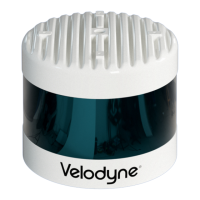The data provided by the sensor in the pcap file is measured relative to the sensor’s reference frame - the sensor’s internal
three dimensional coordinate system which moves with the sensor. That’s markedly different from a point cloud file where
the data points are referenced to a single coordinate system. That coordinate system might be an earth-frame (latitude,
longitude, elevation) or another convenient reference frame.
Processing the raw LiDAR data into a point cloud is called geo-referencing. In geo-referencing, the user takes into account
the sensor’s position (X/Y/Z) and orientation (pitch/roll/yaw) for each measurement. Knowing these six values enables a
user to perform the proper mathematical rotations and translations to reference the LiDAR data into a single coordinate
system.
Two popular techniques Velodyne LiDAR customers use for geo-referencing are inertial referencing and Simultaneous
Localization and Mapping (SLAM).
With inertial referencing, the location and orientation of the sensor at every moment is recorded with an Inertial Navigation
System (INS). An INS combines a Global Positioning System (GPS) receiver with an Inertial Measurement Unit (IMU).
Data from the both the INS and LiDAR sensor are time-synchronized to the GPS satellite’s reference clock, enabling the
user to match each LiDAR data point with its corresponding position and orientation from the INS. Having matched the
LiDAR data with the INS data, each measurement is mathematically translated into a single coordinate system.
SLAM is a technique used by robots to analyze and navigate their environment. SLAM software automatically identifies sta-
tionary objects in the LiDAR data. The algorithm then uses the location of the stationary objects to mathematically back-out
the movement of the LiDAR and translate the data into a single coordinate system.
Most Velodyne LiDAR customers develop their own geo-referencing systems. However, inertial referencing and SLAM
solutions are available through third parties, and many can be found on the system integrators page at: http://velo-
dyneLiDAR.com/integrators.php.
66 VLS-128 User Manual

